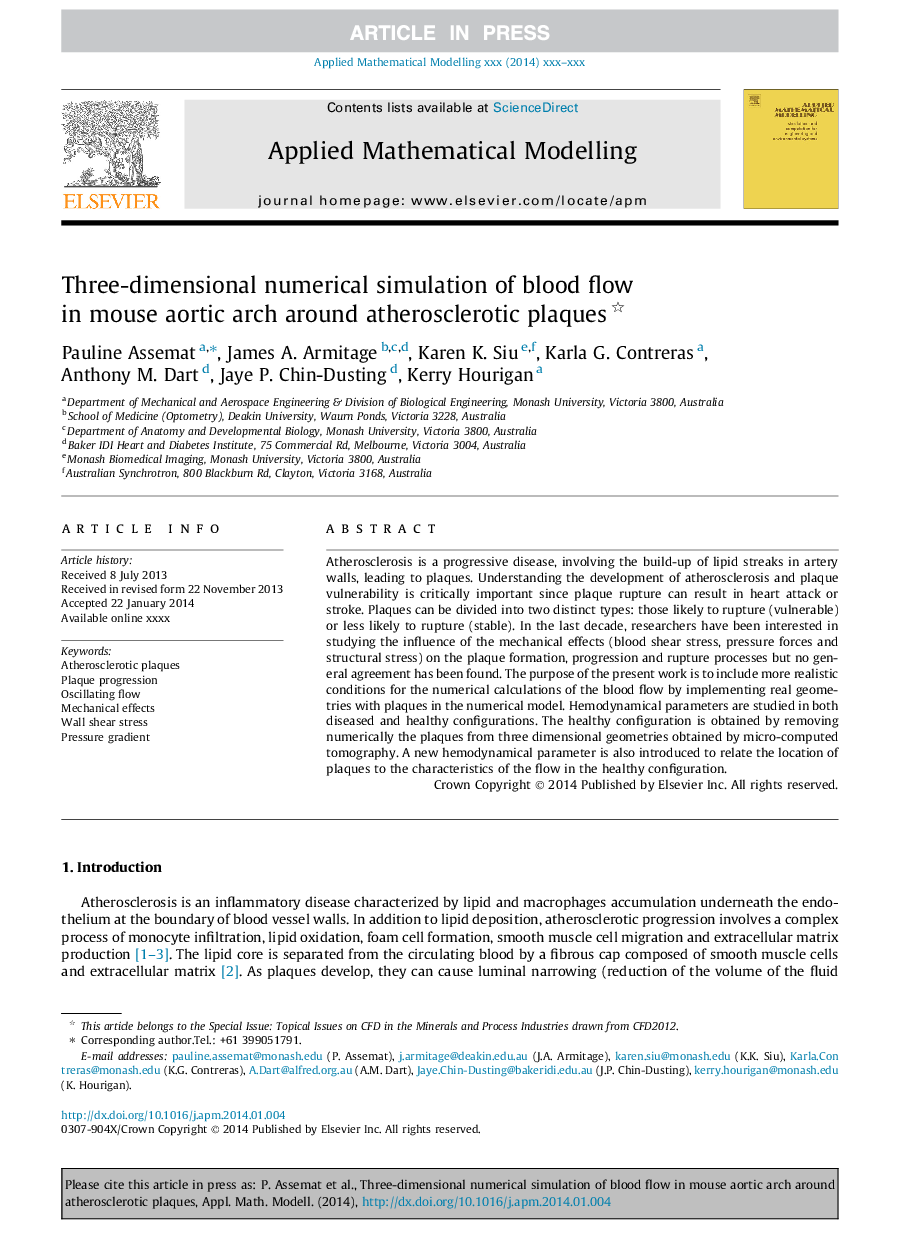| Article ID | Journal | Published Year | Pages | File Type |
|---|---|---|---|---|
| 8052686 | Applied Mathematical Modelling | 2014 | 11 Pages |
Abstract
Atherosclerosis is a progressive disease, involving the build-up of lipid streaks in artery walls, leading to plaques. Understanding the development of atherosclerosis and plaque vulnerability is critically important since plaque rupture can result in heart attack or stroke. Plaques can be divided into two distinct types: those likely to rupture (vulnerable) or less likely to rupture (stable). In the last decade, researchers have been interested in studying the influence of the mechanical effects (blood shear stress, pressure forces and structural stress) on the plaque formation, progression and rupture processes but no general agreement has been found. The purpose of the present work is to include more realistic conditions for the numerical calculations of the blood flow by implementing real geometries with plaques in the numerical model. Hemodynamical parameters are studied in both diseased and healthy configurations. The healthy configuration is obtained by removing numerically the plaques from three dimensional geometries obtained by micro-computed tomography. A new hemodynamical parameter is also introduced to relate the location of plaques to the characteristics of the flow in the healthy configuration.
Keywords
Related Topics
Physical Sciences and Engineering
Engineering
Computational Mechanics
Authors
Pauline Assemat, James A. Armitage, Karen K. Siu, Karla G. Contreras, Anthony M. Dart, Jaye P. Chin-Dusting, Kerry Hourigan,
